a&e features
Chely Wright tours Christmas LP; plans new project for 2019
Out country singer/songwriter eschews holiday standards on ‘Santa’ record


Chely Wright says she didn’t want to record holiday standards unless she could improve them. (Photo by Matthew Rodgers)
Chely Wright
City Winery
1350 Okie St., N.E.
$24 in advance; $28 at the door
Doors: 7 p.m.; show 8:30
For 25 years, Chely Wright has been in the country music spotlight and in 2010, became the first openly gay country singer. Since coming out, Wright has become an LGBT advocate while also recording, touring and embracing life as a mom and wife.
On Thursday, Dec. 20, Wright will be at City Winery promoting her new Christmas EP “Santa Will Find You.” Although she released her first album in 1994, it wasn’t until 1997 that she had her first big hit with “Shut Up and Drive.” In 1999, she rose to superstardom with the success of “Single White Female,” which has become her signature song. Her comments have been slightly edited for length.
WASHINGTON BLADE: What can fans expect from your Christmas show?
CHELY WRIGHT: Well they can expect new holiday music. Whenever you have new music out, one of the tricky things when doing shows is you wanna give people a taste of the new music but they also wanna hear the hits and the things they know you for. As a live performer, you kinda wanna do everything that’s new but you also want your audience to feel engaged and hold onto things that feel known to them during the show. So we’ll be doing the entire new EP and what I’ve been doing over the past couple years is what I call the “Story and Song Tour,” which is basically me running my mouth for almost two hours telling stories about how songs were written, recorded or certain memories about the road or a particular time in my career. I hope the audiences enjoy it because I enjoy it. I’ve been doing this job for 25 years putting records out and longer before I had records out. For me if I can get an audience that wants to go with me on the journey with me for 90 minutes or two hours of how I ended up here today doing what I’m doing, that’s a thrill for me and so far fans have been amenable to it.
BLADE: What inspired you to release a Christmas project?
WRIGHT: I think it’s kind of an understood that any country artist that has a career that spans a decade or two kinda has to make a holiday record. It’s kind of a prerequisite and I’ve been asked about it years ago when I was on major labels and I considered it and kinda wanted to but didn’t want to do it just to do it. I wanted to have a reason to it. Over the years I’ve written a couple of Christmas songs that were recorded by other artists but I just never had done a recording on them aside from the work tape the day I did the songs. It just seemed like this was time. I had a couple of songs, one that the Indigo Girls recorded, Mindy Smith recorded and Mindy and I had written one for her holiday record which was a great holiday record years ago. So it just felt right. I knew I had a couple of songs under my belt and my goal was if I could write three good original holiday tunes to add to that canon, that I’d be good to go. I talked it over with Jeremy Lister and Dustin Ransom the guys I worked with to produce this record and we just thought it was the best idea to make Christmas music so we did.
BLADE: Why did you chose to do an EP instead of a full album? Any reasons for not doing any traditional songs?
WRIGHT: What we decided to do was make a record together and then we wanted to do kind of an artist record, regular studio stuff. I don’t know which one of us brought it up, but the idea got tossed out there “Let’s do an EP of both!” Let’s do Christmas music and studio music and the reason I chose not to do covers is because unless you can record something better than it’s ever been done, it’s really hard for me to wrap my mind around that. No one is gonna call me the greatest singer of all time — we save those monikers for the Alison Krausses, the Lee Ann Womacks, the Trisha Yearwoods, the Martina McBrides —but what I do think I bring to the table that is unique is I write songs. So to me, if I can’t record “Oh Holy Night” better than anyone else has ever done it, well you can’t get me to touch it with a 10-foot pole. I love Christmas standards, it makes sense to me why people record Christmas covers. It’s warm, it’s fuzzy. No one is ever going to pan your record for not having good material. For me as a songwriter, I can’t imagine why I wouldn’t do that.
BLADE: “It Really Is a Wonderful Life” has already become a bit of a Christmas classic, It’s been recorded by The Indigo Girls and Mindy Smith as well. What inspired you to write it and why didn’t you release it first?
WRIGHT: I had gone through a breakup in 2005 and I had moved. I was closeted at the time. It’s not like I could go out to dinner with friends and pour my heart out that I was going through a break up. But my best friend Chuck knew and I was there in my house in East Nashville and Chuck said, I think it was on Christmas Eve day, “Why don’t you write something and send it out to your fans tonight. A little work tape or something. Why don’t you write them a new song?” and I did and I sent it out and I was glad I did my little bit of homework. I always feel better with what I’m struggling with when I write a new song. I sent it out and that was it. Then Mindy Smith was making her holiday record the next year and heard the work tape and said “I’m gonna cut that” then a couple years later The Indigo Girls cut it and so it just didn’t seem like something I should record until now.
BLADE: How did Richard Marx become a part of this project?
WRIGHT: Richard and I have been very close friends for 20-plus years. He and I have collaborated together, we’ve recorded together, we’ve written together, we’ve been important in each others lives for along time. I knew I was making a holiday record and only had three songs to write. I had two titles that I, specifically for sentimental reasons, I wanted to write them with Richard. I wanted him to be on this record for personal reasons. I texted him and said “I got 2 song titles, “Happy New Years Old Friend” and “Christmas Isn’t Christmas Time” do you want to write them with me for this record” and he wrote back “Duh” and that’s how it came about. We enjoy singing together. You know, I take a little offense when any man I’m singing with sings higher than I do and that’s what you get with Richard and Vince Gill (laughs).
BLADE: How did you come to choose the vintage family photo for the cover?
WRIGHT: I was thinking about cover art, you know it’s important, especially for a holiday record because it’s forever. Hopefully people latch onto the music 10 years after I’ve made this record, hopefully someone will come to it and discover it as new. I wanted something was representative of what holidays have always meant for me. I knew pretty well I wanted to call the EP “Santa Will Find You” and for me, because when I was a kid, I really did have a worry that Santa wouldn’t know where I’d be Christmas Eve and Christmas morning. It was a genuine real concern. I found oddly enough my boys have the same concern. It’s like a universal right of passage to wonder if Santa can find you. I started going through family photos and found one my Aunt Char had written Christmas ’73 on top and that was so perfect. It’s my brother and sister and I and our two cousins. My cousin David sadly passed when we were kids, I was 11 when he died. I asked my Aunt Char if she cared if I used the photo and she said “I’d love it! David was a star!” Then I had my friend, world-renowned picture book illustrator, Marla Frazee hand draw the title. So if you wonder what font or text, it’s a piece of artwork and I’m so happy she took the time to do it.
BLADE: Now that you’re a wife and mother, does Christmas take on a whole new meaning?
WRIGHT: You know I was telling my wife the other day that my mom always got Christmas right for us kids. It was always so special and what Lauren said back to me was, “That must be why you work so hard at Christmas for our boys.” I really try to make it magical because you know, you really don’t have a lot of time … to make it magical with kids. Right now they’re 5, so we have the biggest Christmas tree we’ve ever had and my boys are Jewish by the way, did I mention that? We’re raising them as Jewish so we celebrate Hanukkah and Christmas. I feel like it’s one of the magical parts of childhood and I just want to get it right and want them to remember the wonder of the season and of course we talk what it means to be Jewish during the holidays and Christian during the holidays but mostly it’s just Santa and magic and candy and presents. Heck, why not? I remember one Christmas Eve we were driving home from our aunt’s house and I looked up in the sky and saw a red light trailing through the sky. I said “Dad get home fast! It’s Rudolph, they came early!” I remember listening for Santa and sneaking downstairs and trying to see if I could see Santa leaving presents. I also have really great memories of my siblings too. We would somehow put aside our wresting, fighting and bickering and it was us trying to stay up and see if we could see Santa or hear reindeer on the roof.
BLADE: Next year, your debut album, “Woman In The Moon,” turns 25. Any plans to celebrate 25 years in the music business?
WRIGHT: Really good question. I think new music is a great way to celebrate it. A new holiday record and in early 2019 we’ll release another EP that is just studio music. When we went into make the holiday music we also made another EP of regular studio music so that’ll be out.
BLADE: Will it be similar to your last album, “I Am The Rain”?
WRIGHT: It’s hard for me because it’s all me so it all feels like me. I do think it is different. The people who have heard it and who know my body of work say “It’s kind of a tip of the hat to your commercial music,” so that’s kind of exciting. The EP is going to be called “Revival.”
BLADE: You used PledgeMusic to help fund this EP and your next EP as well. You’ve had great success with going the fundraising route. Do you feel this is the way the music business is going for independent artists?
WRIGHT: You know it’s ever changing the business model of putting music out. Had you asked me five years ago that I’d be doing an EP I would probably have said no way. I think it’s important as an artist to continue to be creative and have my voice be heard as a songwriter and as an artist. You have to be nimble and pay attention to the way consumers are consuming music and the way artists are introducing work into the market place. Crowd funding is a thing now. When I did my Kickstarter, I think I was one of the first commercial artists, former major label artists, to have done a Kickstarter and a lot of people are doing it now. Pay attention to the young people, they know what they’re doing. I tend to see what they’re doing and try to do it my own way. Years ago I thought it was just asking for money, but it’s not. It’s pre-selling your record, that’s it. It reengages your fan base. I’ve always been known to have a real supportive, loyal fan base and it seems like a smart way to stay engaged with them. In two years you and I will be talking about the new way people are doing things and hopefully I’ll have enough smarts or foresight to keep changing and as I said earlier, be nimble on how to push music out into the market place.
BLADE: What’s the key to your staying power?
WRIGHT: I think the key is you have to be technologically open minded and creatively opened minded. I think the key to my staying power is, I’ve often said this — if you want to be a writer, you gotta write. I think the key is what I’m about to do after I hang up this phone — change my guitar strings and sit down and play my guitar and make stuff up. It’s hard to keep making records if you’re not creating new work and you gotta do that. Saddle time is what I call that so I’m about to get back on the saddle.
BLADE: Since coming out in 2010 and releasing your book and documentary, do you still get people coming up to you saying your story has helped or inspired them?
WRIGHT: Every day. I either get a DM or a Facebook message or somebody stops me in an airport. It still shocks me how many people heard my story or saw my story or read my story. It’s always pretty humbling to hear how it impacted their journey or their child’s journey. It’s been the biggest blessing of my life to come out the way I did and still causing ripples. Again, it’s humbling and I’m grateful for it.

Chely Wright says she looks at how young people are consuming music when she makes decisions about how to release new projects. (Photo by Matthew Rodgers)
a&e features
From Prohibition to Pride: Queering the District podcast reveals local LGBTQ history
The new podcast explores the hidden history and enduring impact of queer spaces in Washington, D.C.
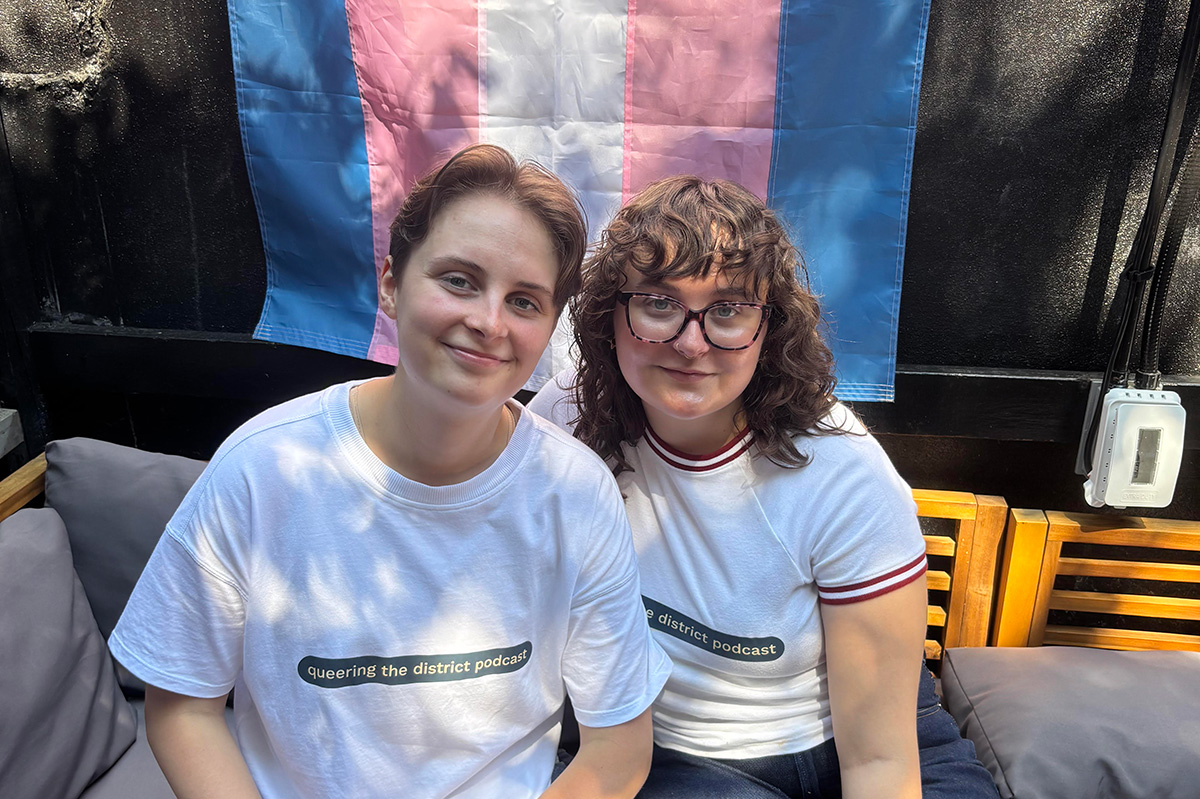
On June 25, as Pride month inched toward its end, three queer creators launched an ambitious project to honor the spaces that built D.C.’s LGBTQ community—and connect them to today’s queer life. The first episode of their podcast, Queering the District, hit streaming platforms that day, aiming to spotlight what host and co-creator Abby Stuckrath calls “third places”: bars, clubs, and gathering spots that have served as hubs for queer life across the city.
Each episode of the 10-part series delves into a different piece of D.C.’s queer past—from landmark clubs to untold personal stories—told through the voices of drag legends, activists, DJs, historians, and patrons who lived it. The show also threads together personal experiences from today’s community, bringing the listener on an auditory journey from Prohibition-era speakeasies to contemporary nights out at places like As You Are or Saints & Sinners.
Abby Stuckrath, alongside her sibling Ellie Stuckrath, and producer Mads Reagan, make up the podcast’s creative team. A recent journalism graduate of American University, Abby told the Blade that her passion for queer storytelling began during college—and that D.C. itself played a defining role in shaping her queer identity.
“I went to American University. I graduated last year and studied journalism. When I was in school, I always wanted to focus on queer stories – especially in D.C., because I’m from Denver, Colorado, I’ve never lived in a place like this before. D.C. has always just kind of been a place I call home when it comes to my queer identity.”
But breaking into the media to tell those stories wasn’t easy. Stuckrath quickly learned that editorial support—and funding—for queer-focused projects is limited. So she decided to do it her own way.
“I kind of found out that if you want to tell stories, you kind of have to do it on your own– especially when it comes to queer stories. There’s not a lot of people begging for us to talk about queer people and to pay you for it. So I was like, ‘Okay, let’s just do it on my own.’”
The idea for the podcast first took root in conversations with Ellie, Abby’s sibling and biggest supporter. Ellie had also moved to D.C. to find more space to explore and express their queer and gender identities. Together, the two began shaping a vision that would combine storytelling, sound design, and grassroots community input.
“I was like, ‘I don’t know what exactly I want to do yet, but I want it to be queer, and I want it to be about D.C., and it’s going to be called Queering the District, and we’re going to find out what that means.’ And Ellie is my biggest supporter, and my best friend. And they were like, ‘Hell yeah. Like, let’s do this.’ And so we decided to just do it together.”
The name stuck—and so did the mission. The team began researching queer D.C. history and found a city overflowing with stories that had rarely been documented, especially in mainstream archives.
“We started looking up the history of queer culture in D.C., and it kind of just clicked from there,” Stuckrath said. “I did not know anything about how rich our history is in the city until one Google search, and then I just kept learning more and more. I was kind of pissed because I studied gender studies in school in D.C. and didn’t learn shit about this.”
Season one focuses on the role of third places—non-work, non-home spaces where queer people could gather, exist fully, and build community.
“Third places have always been the epicenter of queer life… places outside of just your own personal home, because sometimes that isn’t a safe place. And of course, the work most commonly in the past and still today, isn’t a safe place for queer people to be full of themselves. So like, bars were the first place for queer people to really thrive and meet each other.”
To make the show participatory, Queering the District includes a twist: a voicemail line where anyone can call in and share a memory or question. The team calls the phone “Fifi”—a nod to the kind of retro guestbooks often used at weddings, but reimagined for queer nightlife and history.
“We wanted to find a way for people to share their stories with us anonymously… so even though we start in Prohibition, we wanted to connect it to now—like, those people who were singing jazz to each other in a white queer bar are connected to you singing karaoke on a Sunday night at your favorite gay bar. We’re all interconnected by this third place of queer bars in D.C.”
Those connections are emotional as well as historical. While building the series, one realization hit Stuckrath particularly hard: the immense loss of queer spaces in D.C., especially in neighborhoods that have since been heavily redeveloped.
“Every time I go to a Nats game, I think about, well, this just replaced five gay bars that used to be here. It used to be the home of Ziegfeld’s… Tracks, which was almost 2,000 square feet, with a volleyball court in the back, a fire pit, and iconic light show. I just didn’t know that we had that, and it made me sad for the queer elders that are in our city now who walk the streets and don’t see all those places they used to call home.”
That sense of loss—alongside the joy and resilience of queer community—is what the show aims to capture. As the podcast continues, Abby hopes it serves as both a celebration and an educational tool, especially for young LGBTQ people arriving in D.C. without realizing the queer foundations they’re walking on.
“D.C. is a unique city, and specifically young queer people who are hoping to move to the city—to know that you’ve got to know your history to be here. I hope this serves as an easier way for you to consume and learn about queer history, because queer history defines how we move in life.”
And for all the voices still left out, Abby is clear: this podcast is an open door, not a final word.
“This is a perfectly imperfect podcast. We should just be a starting point. We shouldn’t be the ending point.”
New episodes of Queering the District drop every Wednesday on all major platforms.
a&e features
Doug Spearman takes his chance
‘Noah’s Arc: The Movie’ debuted on Paramount+ last month
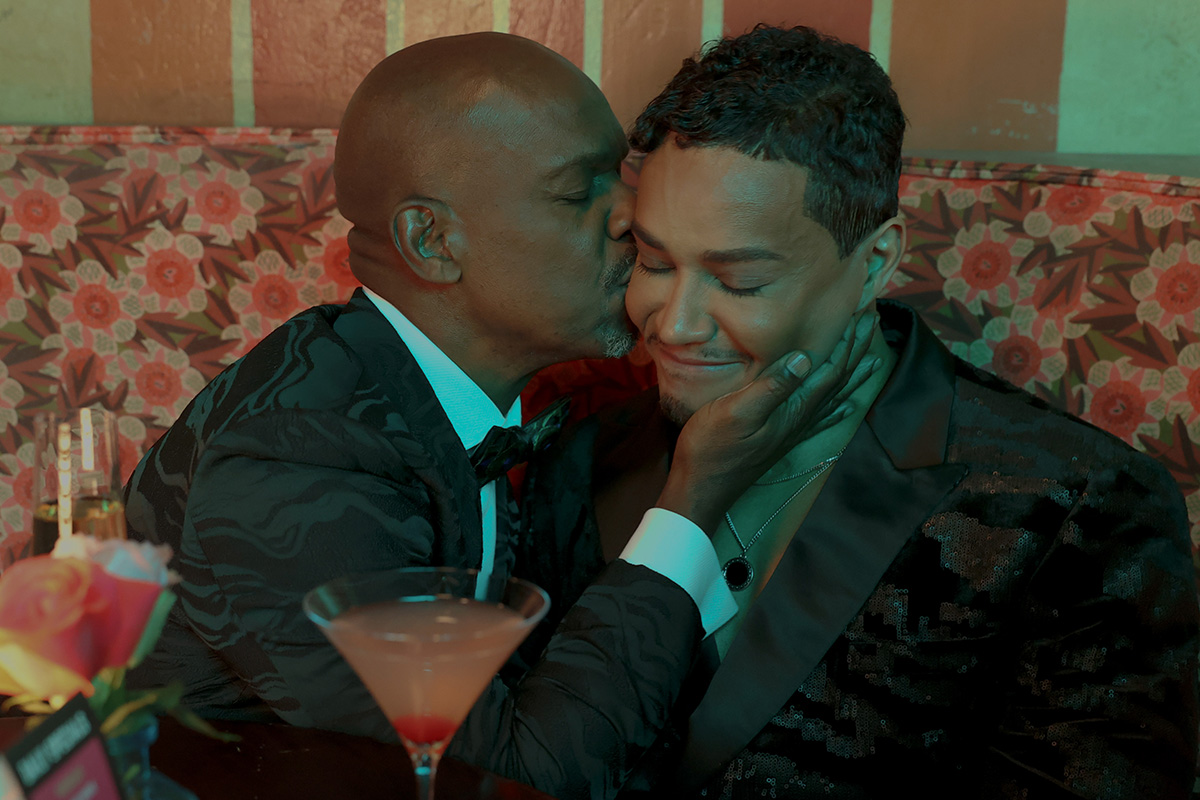
There’s no question that when Patrik-Ian Polk’s series “Noah’s Arc” premiered on Logo 20 years ago, it was a groundbreaking creation. The story of a group of Black gay men and their wonderful friendship. The titular arc was that of the cute main character, Noah (Darryl Stephens), and his close-knit circle of friends, including Chance played by gay actor Doug Spearman. This compelling and loving fraternity may, in fact, be what brought viewers back repeatedly, including a 2008 movie, “Noah’s Arc: Jumping the Broom,” as well as the 2020 “Noah’s Arc” short, and now, a new full-length feature “Noah’s Arc: The Movie,” debuting on Paramount+ on June 20. In the movie, filled with equal measures of laughs and tears, Chance, who has faced a devastating loss, finds his dependable friends there, ready to support and comfort him at a moment’s notice. I had the pleasure of speaking with Spearman the morning of the streaming premiere of “Noah’s Arc: The Movie.”
WASHINGTON BLADE: Doug, since the early 2000s, when the “Noah’s Arc” series premiered on Logo, you have been playing the character of Chance, including in the latest installment, “Noah’s Arc: The Movie.” What was it about Chance that appealed to you as an actor?
SPEARMAN: When Patrik (-Ian Polk) called me to ask me to play him (Chance), I was at JFK airport in the baggage claim, waiting for a suitcase. He explained what the part was. The thing that stuck out to me was the fact that Chance was in a long-term relationship with another Black man. And, they had a child; they had a 4-year-old daughter named Kenya. I had never seen two Black gay men raise a child on TV before. I thought it was the most revolutionary thing I’d ever seen. I immediately thought I’ve got to do this because that was something nobody had seen. I thought it was incredibly important to take the part.
BLADE: “Noah’s Arc: The Movie” was, once again, written and directed by Patrik-Ian Polk, who you just mentioned, is the creator of the entire franchise. What’s the secret to your long-standing working relationship?
SPEARMAN: [Laughs] the whole team, all of us, are like a band of brothers. We fight like brothers, we come together like brothers, we hash things out, we talk, because we’re all very different from our characters. I think the challenge of playing these guys and then uplifting these men, playing a part, especially something written by Patrik, is like solving a math equation. There’s always a challenge that’s enjoyable for me as an actor: to try to find out what it is that Patrik wants, and then how do I do it.
BLADE: I think you do a very good job of it.
SPEARMAN: Thank you very much
BLADE: In the years between “Jumping the Broom” and the new full-length movie, many changes have occurred, and the story addresses some of them, including gay widowhood, which is something that the aging community is now confronting, as well as mental health issues. Please say a few words about how you approached those subjects in the new movie.
SPEARMAN: I had a lot of loss in my life, right before we started shooting. Two months before we started shooting the first series, my mother died. I was going through the grief process through that whole first season. Since then, I’ve lost a lot of people in my life. In fact, when we started shooting the second season, the second week we were shooting, my ex died of a heart attack. I was having to fold that into what I was doing with my life on the set and off the set. You’ve got to show up and you’ve got to do your work. The first two seasons of “Noah’s Arc” are always tinged with the memory of grief. So, when I had to deal with the death that Chance faces (in the new movie), which is a significant death in his life, it wasn’t that hard to reach back, especially the scene in the graveyard. It was something that I unfortunately could pull from personal experience.
BLADE: Shifting gears, the movie features delightful cast surprises, including Jasmine Guy and TS Madison. Did you have a chance to interact with either or both when they were on set?
SPEARMAN: No, I didn’t have any scenes with Jasmine, and I missed her. I wish I had gotten to see her because I actually got to direct Jasmine for a CBS promo shoot for “Queen,” back in the early ‘90s. I had a huge crush on her when she was on “A Different World.” So, I really would have liked to reconnect. But TS and I got to see each other every day because I was in all her scenes. It was extraordinary being around somebody like that. That is one outspoken woman!
BLADE: Even though Beyoncé never makes an appearance in the movie, there’s a lot of talk about her. Would you say you are a Beyoncé fan?
SPEARMAN: Yes! I’m breathing! Yes, I’m a Beyoncé fan. I actually got the chance to meet her. I knew her mom. Her mom was extraordinary to me. She is in the second movie I directed. She also gave us a wedding gown to use in the very first scene of the movie. That family is extraordinarily important to me. Not only just to be a fan, but to be somebody who’s gotten to know them and work with them and see how hard they work. I don’t think anybody works as hard as Tina or Beyoncé.
BLADE: There was a recent news item about gay actor Benito Skinner of the Amazon Prime series “Overcompensating” being told not to bother auditioning for straight roles. As an out actor yourself, how important do you think it is for queer characters to be portrayed by queer actors, and vice versa?
SPEARMAN: Being queer is a multifaceted identity. There’s no one kind of queer person. I think finding the best actor that’s your first circle of casting. I think one of the joys about being an actor is that you get to play different parts. I play straight guys all the time. Dads and husbands and things like that. I think a lot of people are told not to do it. In fact, I wouldn’t be Chance if the actor who was originally cast as Chance hadn’t been pulled out of the series by his agents because they didn’t want him to play a gay character.
BLADE: That’s amazing! Thank you for sharing that. Without giving away too much, the ending of the movie is a little ambiguous, even ending with a question mark. If there was a “Noah’s Arc: The Movie” sequel, would you come back for that?
SPEARMAN: Yeah! A lot of it would depend on what Chance’s journey is going to be like. Patrik and I have conversations like that all the time. He’s very interested and supportive of input. I hope I would be, as we all would be, part of the creative growth with these characters. They live in Patrik’s head, and he writes them, but we’re the ones who have to flesh them out. It’s a conversation, it’s always a conversation.
BLADE: You are currently performing in Molière’s “The Imaginary Invalid” as part of the New Orleans Shakespeare Festival at Tulane. What has this experience been like for you?
SPEARMAN: It’s extraordinary! I started on stage when I was seven. There’s nothing like working with a live audience and having that immediacy. I’m working with an extraordinarily talented cast in a really great play, and I have some of the best scene partners I could ever want.
BLADE: Are there any upcoming film or TV projects you’d like to mention?
SPEARMAN: I’m still a writer, and I’m still a director, and I’ve still got scripts that I would like to make. I have a little something that’s a cross between “Treme” and “Bridgerton” that I want to do. I’m always trying to figure out what the next thing is.
a&e features
Visit Cambridge, a ‘beautiful secret’ on Maryland’s Eastern Shore
New organization promotes town’s welcoming vibe, LGBTQ inclusion
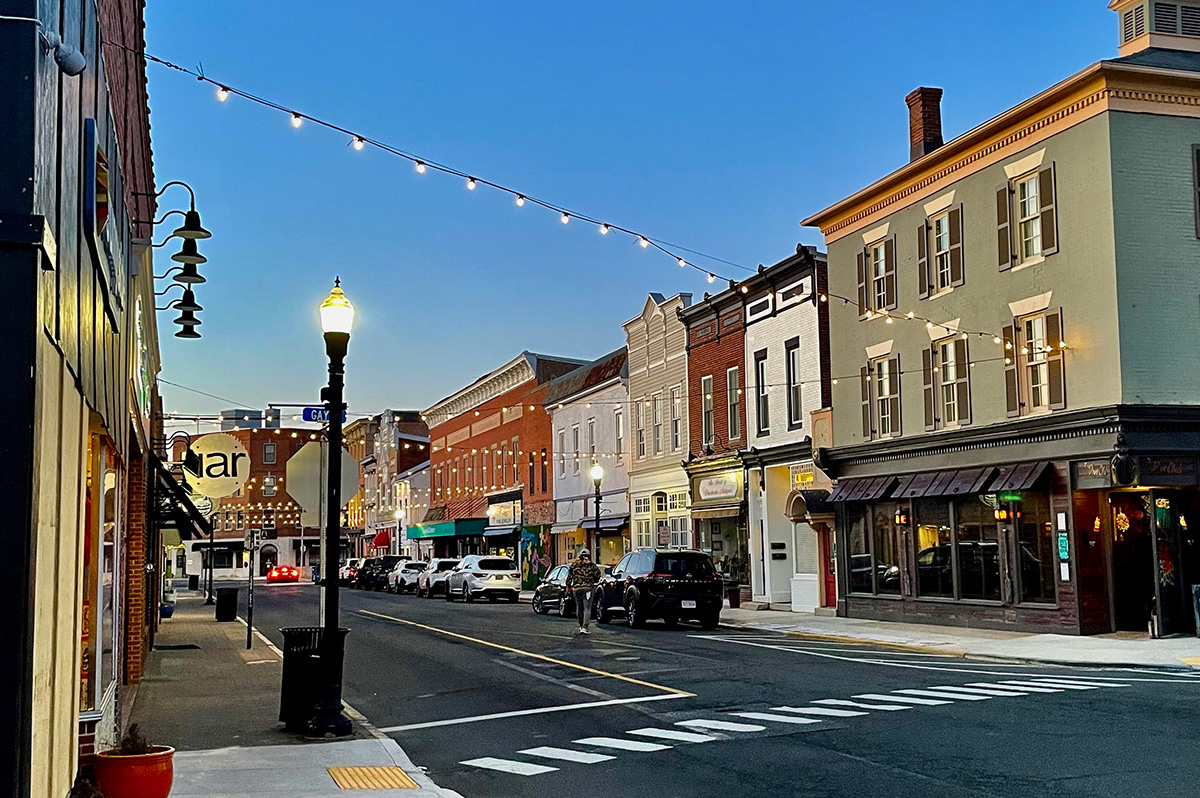
CAMBRIDGE, Md. — Driving through this scenic, historic town on Maryland’s Eastern Shore, you’ll be charmed by streets lined with unique shops, restaurants, and beautifully restored Victorian homes. You’ll also be struck by the number of LGBTQ Pride flags flying throughout the town.
The flags are a reassuring signal that everyone is welcome here, despite the town’s location in ruby red Dorchester County, which voted for Donald Trump over Kamala Harris by a lopsided margin. But don’t let that deter you from visiting. A new organization, Proudly Cambridge, is holding its debut Pride event this weekend, touting the town’s welcoming, inclusive culture.
“We stumbled on a beautiful secret and we wanted to help get the word out,” said James Lumalcuri of the effort to create Proudly Cambridge.
The organization celebrates diversity, enhances public spaces, and seeks to uplift all that Cambridge has to share, according to its mission statement, under the tagline “You Belong Here.”
The group has so far held informal movie nights and a picnic and garden party; the launch party is June 28 at the Cambridge Yacht Club, which will feature a Pride celebration and tea dance. The event’s 75 tickets sold out quickly and proceeds benefit DoCo Pride.
“Tickets went faster than we imagined and we’re bummed we can’t welcome everyone who wanted to come,” Lumalcuri said, adding that organizers plan to make “Cheers on the Choptank” an annual event with added capacity next year.
One of the group’s first projects was to distribute free Pride flags to anyone who requested one and the result is a visually striking display of a large number of flags flying all over town. Up next: Proudly Cambridge plans to roll out a program offering affirming businesses rainbow crab stickers to show their inclusiveness and LGBTQ support. The group also wants to engage with potential visitors and homebuyers.
“We want to spread the word outside of Cambridge — in D.C. and Baltimore — who don’t know about Cambridge,” Lumalcuri said. “We want them to come and know we are a safe haven. You can exist here and feel comfortable and supported by neighbors in a way that we didn’t anticipate when we moved here.”
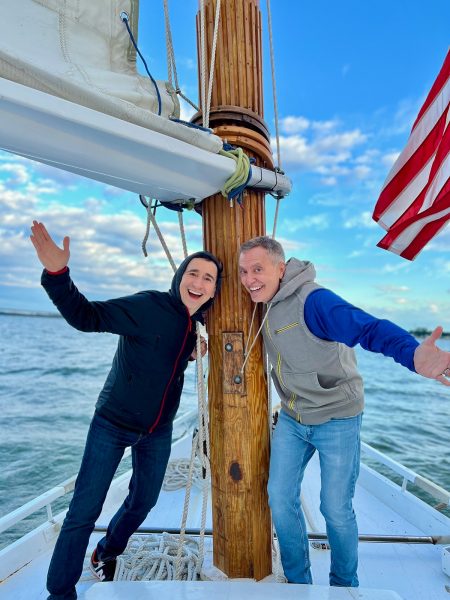
Lumalcuri, 53, a federal government employee, and his husband, Lou Cardenas, 62, a Realtor, purchased a Victorian house in Cambridge in 2021 and embarked on an extensive renovation. The couple also owns a home in Adams Morgan in D.C.
“We saw the opportunity here and wanted to share it with others,” Cardenas said. “There’s lots of housing inventory in the $300-400,000 range … we’re not here to gentrify people out of town because a lot of these homes are just empty and need to be fixed up and we’re happy to be a part of that.”
Lumalcuri was talking with friends one Sunday last year at the gazebo (affectionately known as the “gayzebo” by locals) at the Yacht Club and the idea for Proudly Cambridge was born. The founding board members are Lumalcuri, Corey van Vlymen, Brian Orjuela, Lauren Mross, and Caleb Holland. The group is currently working toward forming a 501(c)3.
“We need visibility and support for those who need it,” Mross said. “We started making lists of what we wanted to do and the five of us ran with it. We started meeting weekly and solidified what we wanted to do.”
Mross, 50, a brand strategist and web designer, moved to Cambridge from Atlanta with her wife three years ago. They knew they wanted to be near the water and farther north and began researching their options when they discovered Cambridge.
“I had not heard of Cambridge but the location seemed perfect,” she said. “I pointed on a map and said this is where we’re going to move.”
The couple packed up, bought a camper trailer and parked it in different campsites but kept coming back to Cambridge.
“I didn’t know how right it was until we moved here,” she said. “It’s the most welcoming place … there’s an energy vortex here – how did so many cool, progressive people end up in one place?”
Corey van Vlymen and his husband live in D.C. and were looking for a second home. They considered Lost River, W.Va., but decided they preferred to be on the water.
“We looked at a map on both sides of the bay and came to Cambridge on a Saturday and bought a house that day,” said van Vlymen, 39, a senior scientist at Booz Allen Hamilton. They’ve owned in Cambridge for two years.
They were drawn to Cambridge due to its location on the water, the affordable housing inventory, and its proximity to D.C.; it’s about an hour and 20 minutes away.
Now, through the work of Proudly Cambridge, they hope to highlight the town’s many attributes to residents and visitors alike.
“Something we all agree on is there’s a perception problem for Cambridge and a lack of awareness,” van Vlymen said. “If you tell someone you’re going to Cambridge, chances are they think, ‘England or Massachusetts?’”
He cited the affordability and the opportunity to save older, historic homes as a big draw for buyers.
“It’s all about celebrating all the things that make Cambridge great,” Mross added. “Our monthly social events are joyful and celebratory.” A recent game night drew about 70 people.
She noted that the goal is not to gentrify the town and push longtime residents out, but to uplift all the people who are already there while welcoming new visitors and future residents.
They also noted that Proudly Cambridge does not seek to supplant existing Pride-focused organizations. Dorchester County Pride organizes countywide Pride events and Delmarva Pride was held in nearby Easton two weeks ago.
“We celebrate all diversity but are gay powered and gay led,” Mross noted.
To learn more about Proudly Cambridge, visit the group on Facebook and Instagram.
What to see and do
Cambridge, located 13 miles up the Choptank River from the Chesapeake Bay, has a population of roughly 15,000. It was settled in 1684 and named for the English university town in 1686. It is home to the Harriet Tubman Museum, mural, and monument. Its proximity to the Blackwater National Wildlife Refuge makes it a popular stop for birders, drawn to more than 27,000 acres of marshland dubbed “the Everglades of the north.”
The refuge is walkable, bikeable, and driveable, making it an accessible attraction for all. There are kayaking and biking tours through Blackwater Adventures (blackwateradventuresmd.com).
Back in town, take a stroll along the water and through historic downtown and admire the architecture. Take in the striking Harriet Tubman mural (424 Race St.). Shop in the many local boutiques, and don’t miss the gay-owned Shorelife Home and Gifts (421 Race St.), filled with stylish coastal décor items.
Stop for breakfast or lunch at Black Water Bakery (429 Race St.), which offers a full compliment of coffee drinks along with a build-your-own mimosa bar and a full menu of creative cocktails.
The Cambridge Yacht Club (1 Mill St.) is always bustling but you need to be a member to get in. Snapper’s on the water is temporarily closed for renovations. RaR Brewing (rarbrewing.com) is popular for craft beers served in an 80-year-old former pool hall and bowling alley. The menu offers burgers, wings, and other bar fare.
For dinner or wine, don’t miss the fantastic Vintage 414 (414 Race St.), which offers lunch, dinner, wine tasting events, specialty foods, and a large selection of wines. The homemade cheddar crackers, inventive flatbreads, and creative desserts (citrus olive oil cake, carrot cake trifle) were a hit on a recent visit.
Also nearby is Ava’s (305 High St.), a regional chain offering outstanding Italian dishes, pizzas, and more.
For something off the beaten path, visit Emily’s Produce (22143 Church Creek Rd.) for its nursery, produce, and prepared meals.
“Ten minutes into the sticks there’s a place called Emily’s Produce, where you can pay $5 and walk through a field and pick sunflowers, blueberries, you can feed the goats … and they have great food,” van Vlymen said.
As for accommodations, there’s the Hyatt Regency Chesapeake Bay (100 Heron Blvd. at Route 50), a resort complex with golf course, spa, and marina. Otherwise, check out Airbnb and VRBO for short-term rentals closer to downtown.
Its proximity to D.C. and Baltimore makes Cambridge an ideal weekend getaway. The large LGBTQ population is welcoming and they are happy to talk up their town and show you around.
“There’s a closeness among the neighbors that I wasn’t feeling in D.C.,” Lumalcuri said. “We look after each other.”
-
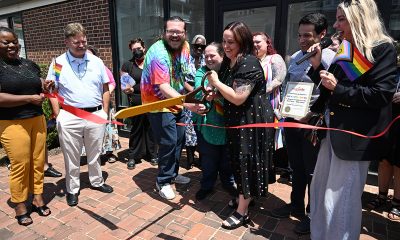
 Virginia2 days ago
Virginia2 days agoDefying trends, new LGBTQ center opens in rural Winchester, Va.
-

 South Africa5 days ago
South Africa5 days agoLesbian feminist becomes South African MP
-
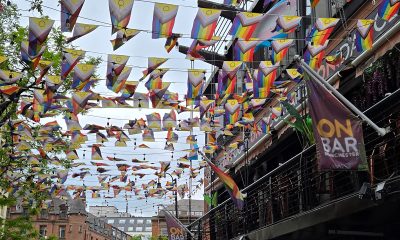
 Travel4 days ago
Travel4 days agoManchester is vibrant tapestry of culture, history, and Pride
-

 Opinions3 days ago
Opinions3 days agoUSAID’s demise: America’s global betrayal of trust with LGBTQ people











